Organic Makeup Brands Invest in Sustainable Sourcing Amid Rising Costs
flareAI
Quick Listen:
Envision a world where your favorite crimson lipstick doesn't just enhance your features but subtly revitalizes your skin, drawing from nature's purest offerings. Amid the vibrant souks of Dubai and the polished emporiums lining Singapore's Orchard Road, organic makeup pioneers are navigating a transformative era. They're committed to procuring ingredients that embody this ideal, undeterred by escalating expenses and intricate global supply networks. This narrative unfolds as one of determination and ecological foresight, where each botanical element and hue contributes to a more harmonious, earth-conscious allure.
Many women feel trapped by makeup that hides flaws but risks irritation and hidden toxins. This daily choice weighs heavily, dimming confidence over time. Liht Organics invites you to embrace beauty differently. With up to 90% USDA-certified organic ingredients, our vegan, cruelty-free products deliver vibrant color and gentle care, letting you glow with confidence, knowing your skin is nurtured, not compromised. Shop Now!
The Economics of Ethical Beauty
The worldwide appetite for pristine cosmetics has reached unprecedented heights, propelled by discerning consumers who navigate social media for inspiration while meticulously examining product disclosures for verifiable green credentials. This escalating interest, however, collides with mounting expenditures for the essential botanicals that infuse these formulations with vitality. Spanning from the arid orchards of India to the advanced hydroponic facilities in the UAE, organic beauty enterprises confront erratic logistics and inflationary pressures on core materials a dynamic compelling strategic recalibrations to balance fiscal viability with unwavering moral standards.
At its core, this phenomenon transcends mere visual appeal; it represents a fusion of financial imperatives and principled conduct. In pivotal arenas such as Singapore, the UAE, and India, forward-thinking buyers are at the vanguard, prepared to invest premiums in offerings that deliver beyond superficial elegance they seek irrefutable evidence of diminished ecological strain. Consider the global organic cosmetics market, appraised at USD 38.77 billion in 2024 and forecasted to expand to USD 43.61 billion in 2025, ultimately surging to USD 111.90 billion by 2033 at a compound annual growth rate of 12.52 percent. This robust trajectory stems from a paradigm shift, where individuals abandon chemically intensive cosmetics in favor of those derived from pesticide-free, GMO-absent cultivation methods envision nourishing plant-derived oils and botanical essences harvested via regenerative agricultural techniques.
Central to this momentum is the burgeoning consumer imperative for environmentally resilient goods, ignited by heightened vigilance toward planetary conservation. Shoppers are increasingly attuned to the repercussions of their selections, gravitating toward organic variants that eschew animal testing, decompose naturally, and harness replenishable assets. In Singapore's compact urban landscape, where environmental acuity thrives, enterprises leverage initiatives like the Green Plan 2030, integrating blockchain-enabled fintech for unassailable provenance tracking alongside user-friendly applications that chronicle the odyssey of each component from soil to shelf. Bridging the Arabian Gulf in the UAE, affluent patrons frequenting outlets such as Namshi and Faces gravitate toward resilient desert flora that optimize hydration efficiency. Meanwhile, India's venerable ayurvedic traditions are catalyzing exponential expansion, with agile ventures forging digital alliances between modest cultivators and international blenders. This localized orchestration not only curtails emissions and outlays but necessitates inventive adaptations to sustain inventory resilience against climatic variances.
Emerging Trends in Sustainable Ingredient Sourcing
Envision scanning a QR emblem on your concealer compact, instantly transported to an immersive agrarian vista that's the emblematic evolution in eco-responsible cosmetics. Companies are forsaking transcontinental freights for proximate nexuses, fortified by cryptographic validations that authenticate environmental assertions. Within Singapore, alliances with accredited verdant estates produce luminous vegetable-derived colorants, metamorphosing indigenous flora into illuminators that eclipse artificial counterparts in luminosity and longevity. In the UAE and Saudi Arabia, emphasis rests on arid-adapted components such as argan offshoots, gleaned through parsimonious watering protocols that venerate parched terrains.
India assumes a protagonist's mantle as well, its timeless ayurvedic codex invigorating provisions for natural lip treatments and primers contemplate ochre-enriched camouflagers that concurrently mitigate dermal irritants. This pivot is no caprice; it's embedded in expansive momentum. The natural and organic cosmetics sector stood at USD 41.65 billion worldwide in 2024, propelling toward USD 103.23 billion by 2034 with a 9.50 percent CAGR commencing 2025. North America commanded USD 19.16 billion in 2024, yet Asia-Pacific emerges as the velocity frontrunner, buoyed by metropolitan proliferation, online retail surges, and digital tastemakers promoting "pure" regimens across Instagram and TikTok. This ascent is underpinned by heightened cognizance among purchasers for secure, ecologically sound, and enduring alternatives, amplified by e-commerce ubiquity and amplified scrutiny of synthetic-induced dermatological adversities.
Distributed ledger emblems and predictive analytics serve as clandestine champions, forewarning of scarcities to avert manufacturing halts. Patrons transcend mere acquisition; they remunerate generously for the enchantment of non-exploitative, decomposable indulgence. Nevertheless, as these innovations disseminate, the imperative for enlightenment intensifies: numerous individuals remain confounded by "organic" connotations, conflating it with ephemeral jargon in an ocean of deceptive eco-narratives. Addressing this, brands must demystify through accessible narratives, underscoring how natural extracts free from synthetic fertilizers and preservatives cater to hypersensitive complexions while aligning with broader sustainability ethos.
Real-World Case Studies: How Brands Are Responding
Spotlight falls on Liht Organics, the trailblazing entity crafted in Singapore and the USA, captivating audiences with compositions exceeding 80 percent pristine organic constituents blends so unadulterated they border on consumable, yet they lavish dermal vitality akin to an indulgent retreat encapsulated. Originating from a vision to amalgamate superior efficacy with compassionate stewardship, Liht evades the pitfalls ensnaring novices: opaque disclosures and arcane component enigmas. Conversely, it unveils exhaustive transparency, from agrarian genesis to applicative finale, instilling assurance via effortless digital inquiries.
Collaborating with territorial titans like The Green Collective in Singapore and Faces in the UAE, Liht engages environmentally inquisitive demographics yearning for that "edible-grade" essence devoid of performance concessions. Conceive a velvet-finish rouge enduring the sweltering Dubai dusk while infusing moisture, or a base combating oxidative assailants amid Mumbai's frenetic commutes. This isn't mere promotion; it's actualized through symbiotic ventures amplifying authentic chronicles envision TikTok vignettes of harvesters toiling beneath Singapore's equatorial blaze, or Instagram broadcasts elucidating jojoba's supremacy over endocrine-disruptive preservatives. Such endeavors not only educate but fortify communal bonds, mirroring the sector's pivot toward holistic accountability.
Beyond borders, Australian collectives coalesce into syndicates, amalgamating vendors to insulate against importation vicissitudes and perpetuate exotic essence influxes economically. In India, sprightly innovators accredit petite agrarian parcels, securing fiscal constancy while uplifting collectives a triumph resonant with Liht's transnational philosophy, melding American ingenuity with Singaporean exactitude. These exemplars illustrate a broader imperative: in an industry besieged by petrochemical legacies and habitat encroachments, pivoting to verdant paradigms isn't elective it's existential, ensuring longevity amid regulatory evolutions and discerning demands.
Key Challenges and Cost Pressures
Yet, this verdant idyll harbors impediments. Authentic organics those vital colorants, essences, and cerates confront amplified fiscal strains, exacerbated by logistical upheavals and probity evaluations. Compounding this are credence chasms: prospective adherents hesitate, querying, "Does this truly surpass, or merely inflate?" They demand lucidity on compositions, yet paucity of particulars fosters dubiety, particularly in arenas where "pristine" spans from paraben-omitted to wholly agrarian-sourced. This informational void perpetuates a cycle of apprehension, especially as synthetic alternatives masquerade under lax oversight.
Procurement labyrinths intensify transnational trajectories necessitate navigating disparate edicts, from India's phytotherapeutic legacies to UAE's levy architectures. Encasement exacerbates the ordeal: cosmetic plastics scrutiny escalates owing to deleterious ecological ramifications, with Ocean Conservancy approximating 11 million metric tons annually infiltrating oceans, atop 200 million metric tons in circulation. Microplastics, including exfoliant spherules in ablutionary cosmetics, evade filtration in treatment infrastructures, tainting aquifers and endangering aquatic fauna via ingestion. Sovereign interventions proliferate the 2015 U.S. Microbead-Free Waters Act proscribed these particulates in rinse-off wares to shield conduits and sea life, paralleled by edicts in Canada, New Zealand, and the U.K., though exemptions persist, burdening enterprises with transitions to recyclable biopolymers or agrarian-derived casings.
For Liht Organics, these barriers resonate profoundly: imparting why surpassing 80 percent organic eclipses artificial bulwarks demands beyond slogans it mandates interactive showcases, collaborative TikTok sequences, and candid Instagram dialogues to eradicate skepticism. This underscores a cardinal verity in cosmetic's verdant sprint: openness constitutes the adhesive binding patron fidelity, particularly as over 40 percent of global consumers prioritize innate elements, per rigorous inquiries.
Opportunities: Efficiency, Ethics, and Brand Positioning
Inverting the lens, adversities burgeon into prospects. Cyclical frameworks redefine conventions repurposing agrarian residues into color bases diminishes refuse and resources. Innovation accelerates: artificial intelligence delineates components to circumvent interruptions, while portals afford glimpses into emission ledgers. For entities like Liht, this constitutes treasure: their transatlantic lineage radiates in UAE salons and Indian markets, where elite seekers pursue opulence interwoven with rectitude.
Singapore's statutes cultivate clean beauty innovations, construed locally as paramount safety and exemption from aggressors, diverging from Western Europe's sustainability entwinement or America's self-regulated purity. In UAE and Saudi realms, affluent enthusiasts propel elite organics, whereas India and Malaysia's thrift-conscious cohorts amplify the moral surge expeditious ascent intersects deliberate expenditure. The natural ingredients market ascended from USD 642 million in 2022 to a foreseen USD 1,095 million by 2030, mirroring this fervor. Liht harnesses this current adeptly, affirming that astute procurement peddles essences not solely tones.
Conservation advances apace: supplanting synthetic sentinels like parabens with phytogenic microbials, resolving miscibility hurdles via biogenic stratagems that sustain freshness bereft of remorse. Enterprises stand united; titans like Estée Lauder vow 50 percent post-consumer recycled material by 2025, harnessing lifecycle audits, subdued-impact procurement, and bio-procured substances. Analogously, the L'OCCITANE Group, from Geneva on July 17, 2025, champions verdancy via communal synergies and biotic safeguarding 58 percent of aqueous footprint mitigated through producer-NGO pacts yielding conservation directives, alongside circular aqueducts. Videos illuminate: immortelle's organic Corsican nurture preserving genomic legacies; shea's €2 million RESIST bolstering West African matriarchs; Dr. Vranje's refillable glass diffusers from recycled PET.
Future Outlook and Expert Insights
Prospecting forward, verdant procurement transcends ancillary pursuits it's the paramount arena, channeling preponderant capital into these dynamic spheres. Transitions loom from isolated assurances to comprehensive disclosures: instantaneous unveilings of provenances, enclosures, and effluents, transmuting metrics into magnetism. Publications on natural cosmetics have surged since 2013, journals and patents delineating this ascent, paralleled by preservative and NaDES trends from 2003 onward evidencing an inexorable march toward eco-consonant, efficacious paradigms.
"Procurement candor emerges as opulence's emergent stratum," reflects a Singaporean purity sentinel. "Entities validating untainted integrity sequentially? They shall monopolize enduring allegiance." Resonances emanate from L'OCCITANE's stewardship: rejuvenating terrains from Burkina Faso shea enclaves to Corsican blooms a template for restitutional aesthetics. In APAC, where pristine denotes sanctuary and synthetic abstinence, this reverberates profoundly; Europe's verdant nexus, America's autonomous essence all coalescing upon communal terrain, propelled by digital sway and regulatory harmonization.
Sustainable Sourcing as Competitive Advantage
Ultimately, as Liht Organic's assortments adorn podiums from Abu Dhabi's Gold Apple to Namshi's virtual streams, a singular axiom endures: moral procurement isn't a perfunctory mark it's the substratum. It interlaces fortitude into logistical filaments, dissipates credence nebulas via empirical chronicles, and forges cosmetics that excel as the biosphere respites. For audacious marques wagering on phytogenics over expedients, the recompense is transcendental: surpassing transactions, imprinting a heritage glossed in viridescence. In a realm rousing to its visage, therein resides the veritable aesthetic imprimatur.
Frequently Asked Questions
Why are organic makeup brands focusing on sustainable sourcing despite rising costs?
Organic makeup brands are prioritizing sustainable sourcing because discerning consumers increasingly demand verifiable green credentials and are willing to pay premiums for products with reduced ecological impact. The global organic cosmetics market is projected to reach USD 111.90 billion by 2033, driven by heightened awareness of planetary conservation and the shift away from chemically intensive cosmetics. Brands recognize that ethical procurement isn't optional it's essential for long-term viability amid evolving regulations and consumer expectations.
How are organic beauty brands using technology to ensure transparency in ingredient sourcing?
Leading organic beauty brands are leveraging blockchain technology and QR codes to provide complete supply chain transparency, allowing consumers to trace ingredients from farm to shelf instantly. Companies use distributed ledger systems and predictive analytics to authenticate environmental claims and prevent supply chain disruptions. This technological approach helps address consumer skepticism by providing verifiable proof of organic certification, ethical farming practices, and reduced carbon footprints through localized sourcing partnerships.
What makes natural and organic cosmetics better for sensitive skin compared to conventional makeup?
Natural and organic cosmetics use plant-derived ingredients free from synthetic fertilizers, pesticides, and harsh preservatives like parabens, making them gentler on hypersensitive skin. These formulations often contain nourishing botanical oils and essences harvested through regenerative agricultural techniques that deliver skin benefits beyond surface beauty. Brands like Liht Organics create products with over 80% pure organic ingredients that hydrate and combat oxidative stress while avoiding endocrine-disruptive chemicals commonly found in conventional cosmetics.
Disclaimer: The above helpful resources content contains personal opinions and experiences. The information provided is for general knowledge and does not constitute professional advice.
You may also be interested in: Nerissa Low of Liht Organics: “Seeing Light at the End of the Tunnel;
Many women feel trapped by makeup that hides flaws but risks irritation and hidden toxins. This daily choice weighs heavily, dimming confidence over time. Liht Organics invites you to embrace beauty differently. With up to 90% USDA-certified organic ingredients, our vegan, cruelty-free products deliver vibrant color and gentle care, letting you glow with confidence, knowing your skin is nurtured, not compromised. Shop Now!
Powered by flareAI.co
Share
You May Also Like
-

Discovering Self-Love Through Clean Beauty: A Guide to Nurturing Your Inner and Outer Self
In the journey of self-love, every action, thought, and choice we make towards ourselves can be a powerful affirmatio...
-

The Science Behind Organic Makeup and Pregnancy: A Gentle Choice for Moms-to-Be
wp:paragraph Pregnancy is a wonderful and exciting journey that comes with added responsibilities of ensuring the ...
-

Liht Organics Black Friday: Enhance Your Beauty Routine with Vegan, Organic, and Natural Essentials!
As the holiday season approaches, there’s a sparkle in the air, and we at Liht Organics are thrilled to add a touch o...
-

Organic Makeup That Heals As It Conceals
Liht Organics Empowers Women With Only The Best For Their Beauty NeedsLiht Organics combines the best of both worlds:...
-
![[FEATURE] Liht Organics to debut at TFWA Asia Pacific show](//lihtorganics.com/cdn/shop/articles/1_1.png?v=1759328400&width=170)
[FEATURE] Liht Organics to debut at TFWA Asia Pacific show
‘Organic makeup that’s safe enough to eat’ — Liht Organics to debut at TFWA Asia Pacific show by Hannah Tan | 24 Apri...
-
![[FEATURE] The Singapore-based organic makeup brand is a first-time exhibitor at this year’s TFWA Asia Pacific Exhibition in Singapore in May 2025](//lihtorganics.com/cdn/shop/articles/2_1.png?v=1759328386&width=170)
[FEATURE] The Singapore-based organic makeup brand is a first-time exhibitor at this year’s TFWA Asia Pacific Exhibition in Singapore in May 2025
TFWA Asia Pacific preview: Liht Organics targets expansion in travel retail By DFNI Staff Writer The Singapore-bas...
-
![[FEATURE] Travel Retail Awards 2025 finalists - Best Make-up Product Color-Intense Liquid Lipstick – Liht Organics](//lihtorganics.com/cdn/shop/articles/4_e2f54f0f-fcd1-46e7-9990-fc9d29e35131.png?v=1759328382&width=170)
[FEATURE] Travel Retail Awards 2025 finalists - Best Make-up Product Color-Intense Liquid Lipstick – Liht Organics
Revealed: Travel Retail Awards 2025 finalists By Trbusiness Editor | Wednesday, 23 July 2025 15:21 TRBusiness is th...
-
![[FEATURE] Liht Organics targets expansion in travel retail](//lihtorganics.com/cdn/shop/articles/3_1.png?v=1759328346&width=170)
[FEATURE] Liht Organics targets expansion in travel retail
Organic makeup that’s safe enough to eat: Liht Organics targets expansion in travel retail By Laura Shirk Liht Organ...
-

[FEATURE] Gulf News: TikTok’s strawberry girl makeup trend: How to achieve that rosy glow inspired by Hailey Bieber
Berry, berry, strawberry, love strawberry, like BTS’s J-Hope, the band’s strawberry enthusiast once said. If only we ...
-

[FEATURE] Gulf Business Magazine : Liht-ing it up
Our founder, Nerissa Low was interviewed by Gulf Business, where she discussed her experience launching Liht, an orga...
-

[FEATURE] Daily Vanity: 11 local beauty brands owned by women – you’d be surprised how many of them started in their kitchens!
When we give a shout-out to homegrown beauty businesses, we aren’t just doing it for the sake of supporting local. Th...
-

[FEATURE] Entrepreneur ME : UAE-Based Liht Organics' Nerissa Low On Crafting An Organic Makeup Brand For The Skin-Conscious Consumer
As is the case with the origin stories of so many startups out there, Liht Organics came into being after its founder...
-

Mother, Baby & Child Editor’s Pick: Liht Organics Lights the Way
Excited to be the Mother, Baby & Child’s ‘Editors pick’ for their choice of Beauty brand.The article outlined the...
-

[FEATURE] EmiratesWoman - 8 Fabulous things to do in Dubai this weekend
by SARAH JOSEPHJANUARY 20, 2023Try the UAE’s first virtual reality makeup podium The popular VR-backed makeup exper...
-

Nerissa Low of Liht Organics On The Self-Care Routines & Practices Of Busy Entrepreneurs and Business Leaders
By Maria Angelova, CEO of Rebellious Intl.Date: 4 January, 2023Nerissa Low of Liht Organics On The Self-Care Routines...
-

Liht Organics: Meet the beauty brand that has caught the eye of the Royal Family of Bahrain
By Crystal Lee Digital Editor28 May 2021The world of clean beauty is, ironically, rather murky.That’s because the ter...
-

The latest luxury makeup and skincare drops, including serums, concealers, moisturisers and more
Allisa Noraini21 May, 2021It’s fine to splurge in the name of beauty. This new range of makeup and skincare drops are...
-

These SG Beauty Bosses Are Conquering The World Despite The Pandemic
First Singapore, then the US, China, Germany, Dubai, UK, South Korea, Malaysia, Hong Kong, Thailand, Australia… By...
-

Nerissa Low, Founder at Liht Organics
Written by Callum LaingPosted on December 26, 2020 10 min readNerissa Created Organic Makeup That Actually Improve...
-

Liht Organics – Makeup That Makes You
At Liht Organics, our mission is simple – to provide women (and men) with a safe experience when it comes to beauty s...
-

Why Should We Use Organic Makeup?
We cannot deny that cosmetics is one of our beauty essential item – it enhances our looks and conceals our flaws. Man...
-

Organic makeup and why your skin will love it: Liht Organics founder
By Jolene,July 27, 2020 |7 mins readOrganic make up in Singapore is a trend that is fast-catching on here as we becom...
-

[FEATURE] DC EDIT – Makeup & Confidence: Talking Self-love With Liht Organics’ Founder Nerissa Low
Makeup and confidence — the long, drawn-out fight that many of us have grappled with personally. I’m sure I’m not the...
-

[FEATURE] THE FEMALE CULTURE – I TRIED LIHT ORGANICS AND THIS IS HOW IT WENT
I’m a huge fan of makeup and I love testing out new products so I was pretty excited to get my hands on Liht Organics...
-

[FEATURE] SINGAPORE MOTHERHOOD – The Best Organic and Natural Skincare and Makeup for Pregnant and Breastfeeding Mums in Singapore
Pregnancy is a hormone-volatile period for women. One place where this makes itself seen and felt is on the skin. Som...
-

[FEATURE] AFTER CLINIC HOURS – 21 Back to Beauty Deals in Singapore (2020)
With spas and salons shuttered island wide for two months, I never thought I’d be this desperate for a good old’ Swed...
-

[FEATURE] KUL AL USRA MAGAZINE JUNE 2020
Choosing Pinks & Oranges this summer!Featured: Moisture Burst Lip Glaze in Pink Cupcake.
-
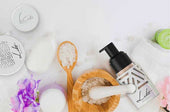
[FEATURE] Award-winning Organic Makeup Brand Liht Organics Gives Back to the Community & Environment During COVID-19
Singapore’s First Organic Makeup Brand with 100% Natural Makeup That Is Safe Enough to Eat Liht Organics promises org...
-

[FEATURE] COSMETICS DESIGN ASIA – COVID-19 ‘WAKE-UP CALL’: SINGAPORE’S LIHT ORGANICS SEES GLOBAL POTENTIAL AMID CLEAN BEAUTY CLAMOUR
Original article at: https://www.cosmeticsdesign-asia.com/Article/2020/06/26/Singapore-s-Liht-Organics-sees-globa...
-

[FEATURE] THE LIFESTYLE COLLECTIVE – BEAUTY SHOULD NEVER BE CRUEL
Date: June 24, 2020Author: Kristen Chen Liht (pronounced as light) Organics is a Singaporean organic makeup brand t...
-

[FEATURE] NÜYOU – 7 ONLINE PLATFORMS TO SHOP FOR CLEAN BEAUTY PRODUCTS
纯净美容(Clean Beauty)的美肤概念,再近几年来越来越受欢迎。随着消费者“爱自己”的美容意识逐步提升,对于用在脸上的所有物品、成分更为关注和讲究。以广义来讲,纯净美容主张使用“干净”成分和无毒配方,让肌肤的可能性损伤减到最小...
-

[FEATURE] COSMOPOLITAN MIDDLE EAST – 3 BENEFITS OF SWITCHING TO ORGANIC BEAUTY PRODUCTS THIS RAMADAN
By Cosmo – May 08, 2020Nerissa Low, founder of Liht Organics, shares the ultimate benefits of going organic this mont...
-

Nerissa Low of Liht Organics: “Seeing Light at the End of the Tunnel; 5 Reasons To Be Hopeful During this Corona Crisis”
Ely Weinschneider, Psy.D.May 8 · 9 min read …It shows us that everyone- whether we are rich or poor, regardless...
-

[FEATURE] AL MARA MAGAZINE APRIL 2020
-

[FEATURE] RetailME April 2020 – Liht Organics Stays Firm On Strengthening GCC Presence
-

[FEATURE] EMARAT AL YOUM NEWSPAPER – 27 MARCH 2020
English Translation:In spring and summer days, women love to have very light makeup in terms of color and texture, ...
-

[ARTICLE] WKND Magazine March 2020 – Know Your Organic Makeup
-

[FEATURE] AVIAMOST DUBAI – March/April 2020
English Translation:Lipstick with organic flowers. Thanks to the rich complex of natural ingredients, the lipstick...
-

[FEATURE] RUSSIAN EMIRATES (MAR/APR ISSUE)
Russian Emirates is a luxury lifestyle and fashion magazine covering information about the UAE, fashion, beauty, j...
-

[FEATURE] – KUL AL USRA MAGAZINE MARCH 2020
GET THE LOOK!
-

[FEATURE] IMAGES Retail ME – Liht Organics Announces GCC-Wide Expansion
Rupkatha Bhowmick Mar 10, 2020 The plan is to reach 75 Liht Organics retail touchpoints by June-July 2020 and touch...
-

[FEATURE] BABY & CHILD SPRING 2020 – NATURAL BEAUTIES
-

[FEATURE] AWQAT DUBAI – Liht Organics: The First Premium Organic Makeup Brand
ENGLISH TRANSLATION:Liht Organics – The First Premium Organic Makeup Brand Liht Organics, a premium organic beauty ...
-

[FEATURE] FRIDAY MAGAZINE – THE RETRO EYELINER LOOK
-

[FEATURE] MOTHER BABY & CHILD – VANITY ESSENTIALS – THE BEAUTY EDIT
-

[FEATURE] Masala! Magazine February/March 2020 Issue – Beauty Debut: Liht Organics
-

[Feature] – TimeOut Singapore – The Best Local Beauty and Skincare Brands In Singapore
For full article, click here.
-

[FEATURE] KUL AL USRA MAGAZINE – LIHT UP YOUR WORLD WITH LIHT ORGANICS
[ENGLISH TRANSLATION]Liht Up Your World With Liht OrganicsThe First Premium Organic Makeup Brand To Debut In The Mi...
-

[FEATURE] SINGAPORE TATLER – 9 Local Beauty Brands You Should Know Of
-

[FEATURE] nüyou August 2019 Issue – 15 Faces To Watch
-

[FEATURE] HONEYCOMBERS – Local Beauty Gurus: Singapore Beauty Brands You Need To Know About
-

[FEATURE] The Wellness Insider – Seeing The Liht With Founder Nerissa Low
-

[FEATURE] 联合早报 (LianHeZaoBao) – Women Entrepreneur Awards 2019 Coverage
-

[FEATURE] THE STRAITS TIMES Life – Clean beauty with a Singapore heart
-

Romantic Organic Makeup Looks for Valentine's Day: Tips, Tricks, and Product Picks
Valentine's Day is the perfect occasion to embrace the beauty of organic makeup. At Liht Organics, we believe in the ...
-

Enhance Your Eyes: A Guide to Eyeliner for Every Eye Shape with Liht Organics
Welcome to the Liht Organics blog, where we believe in celebrating the natural beauty of every eye shape. Today, we'r...
-
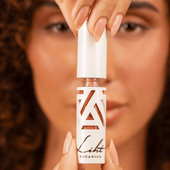
How to do makeup with only lipstick?
At Liht Organics, we believe in the power of clean beauty and the artistry of makeup. Makeup is more than just enhanc...
-

How to Clean Your Makeup Brushes in 6 Simple Steps
Cleaning your makeup brushes may seem like a tedious task, but it's an essential part of your beauty routine. Not onl...
-

Makeup Tips to Help You Look Your Most Flattering on Virtual Meetings!
After more than 2 years of work-from-home arrangement, and possibly hundreds of zoom calls and Google meet virtual me...
-

Learn How to Contour with This Simple Guide for Beginners
Want to take your makeup to the next level? Try contouring to achieve a more defined or sculpted look à la the Kardas...
-
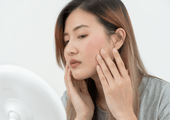
Essential and Easy Makeup Tips for Sensitive Skin
Living with sensitive skin conditions like eczema, psoriasis, and more is already not an easy feat. Throw in makeup t...
-

Raising Your Vibration: A Liht Organics Guide for Empowerment This International Women's Day
wp:paragraph As International Women's Day (IWD) approaches, it serves as a powerful reminder of the journey towards s...
-

The Beauty of Going Bare: Why Sleeping with Makeup is a No-No
Have you ever had one of those nights where you're too tired to clean off your makeup? You might believe, "Skipping...
-

Breast Cancer Awareness: Empower Your Beauty with Liht Organics Makeup
During October, we observe Breast Cancer Awareness Month as a way to unite and bring attention to breast cancer whil...
-

The Hidden Dangers of Carmine in Makeup Colorants: Embracing Healthier and Vegan Options
Makeup has become an integral part of our daily routines, allowing us to express our unique beauty. However, as we pr...
-

How can I ensure that my makeup products are organic and won't harm my skin?
When it comes to makeup, it’s important to be mindful of what you’re putting on your skin. With so many products on t...
-

[FEATURE] HONEYCOMBERS – BEST BEAUTY BUYS IN JULY
by Nicole NithiyahWhat’s hot in our beauty hit list: Honest thoughts and top beauty stories we’re swooning over. As w...
-

Liht Organics Introduces Exclusive Gift Sets: Enhance Your Beauty This Festive Season!
As the holiday season approaches and the year draws to a close, Liht Organics is thrilled to present two enchanting g...
-

Get Spooktacular with the Best Halloween Makeup Ideas using Liht Organics' All-Natural, Vegan, and Cruelty-Free Cosmetics!
With Halloween just around the corner, it’s time to let your creativity shine and transform yourself into a spooky,...
-

Celebrating World Animal Day with Liht Organics: Embracing Natural Cruelty-Free Makeup
wp:paragraph As we observe World Animal Day, the team at Liht Organics takes great pride in honoring our pledge to...
-
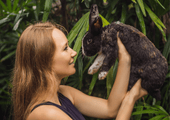
Reasons Why You Should Choose Cruelty-Free Cosmetics Instead!
With increasing exposés unveiling the ugly truth behind animal testing that goes on in the beauty industry, it is lit...
-

Celebrate Singles Day with Makeup That Empowers – 22% Off at LIHT Organics!
This Singles Day, treat yourself to beauty that goes beyond skin-deep. At LIHT Organics, we believe makeup is about s...
-

Preparing for the Cozy Beauty of Autumn: A Preview of Your Fall Look
As we bid farewell to the warm, sun-kissed days of summer, it’s never too early to start dreaming about the enchantin...
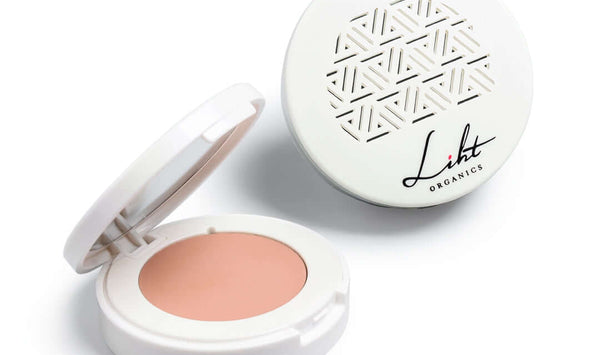

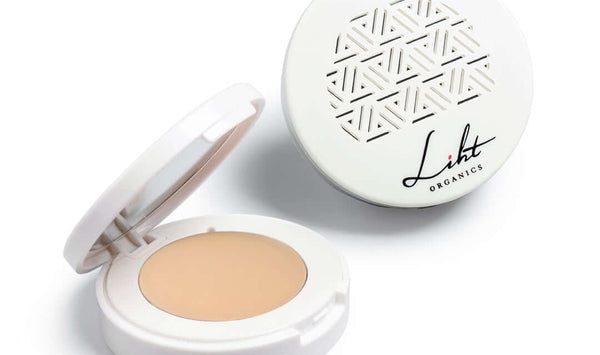
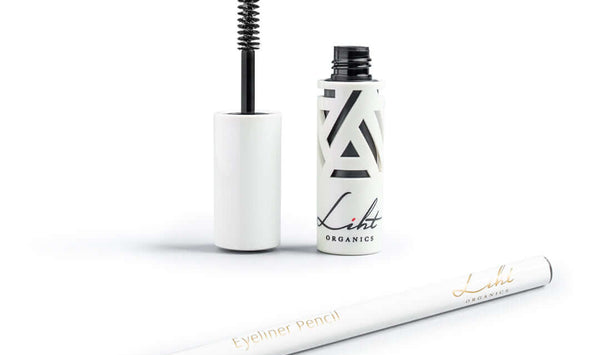
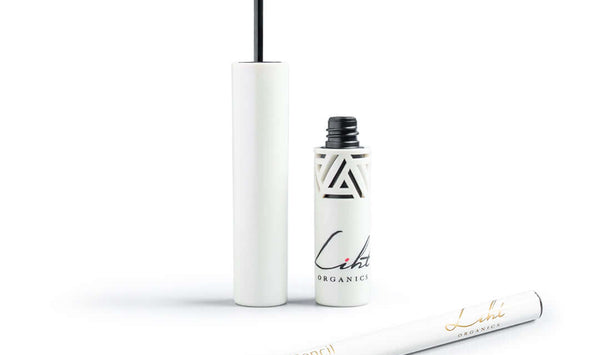

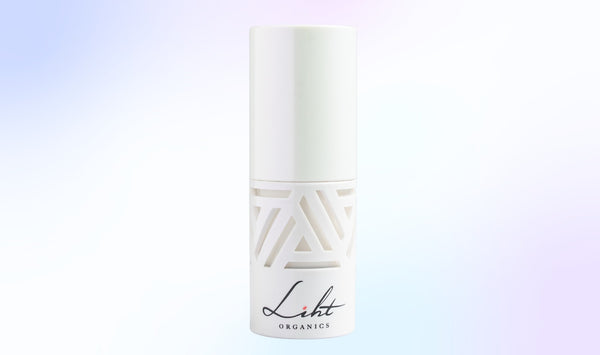

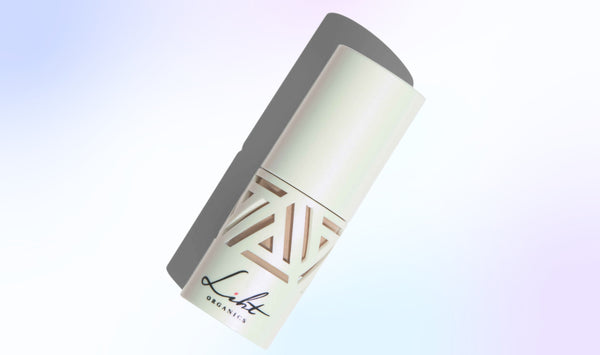
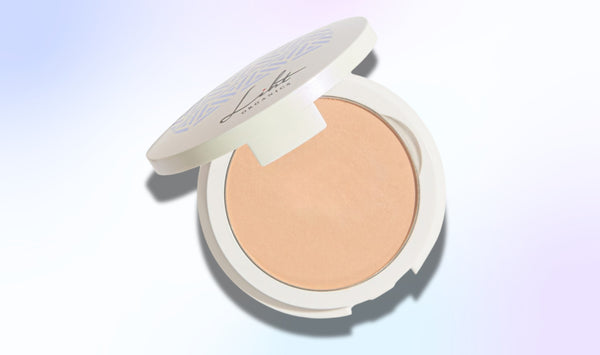
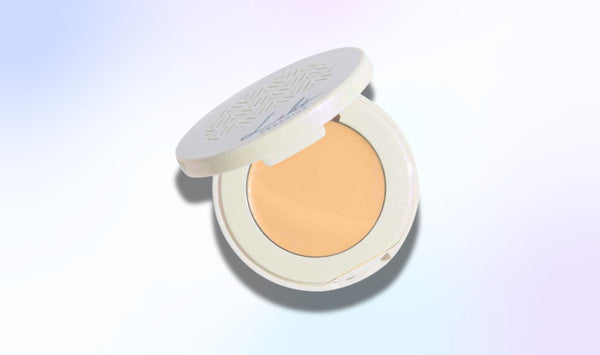
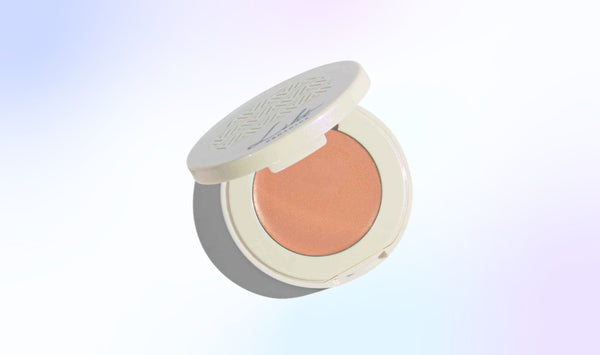
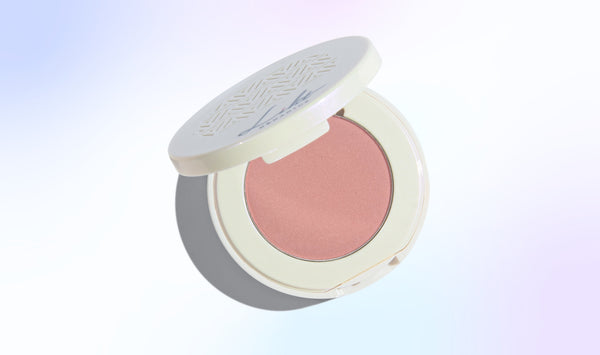
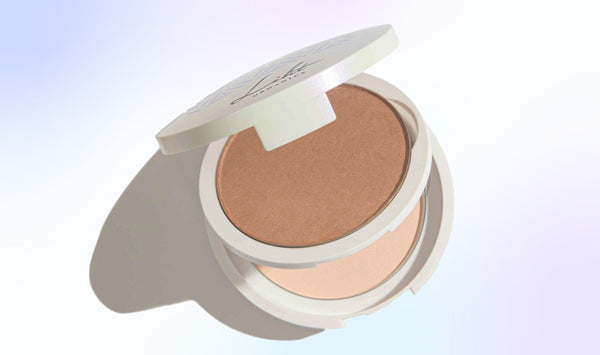
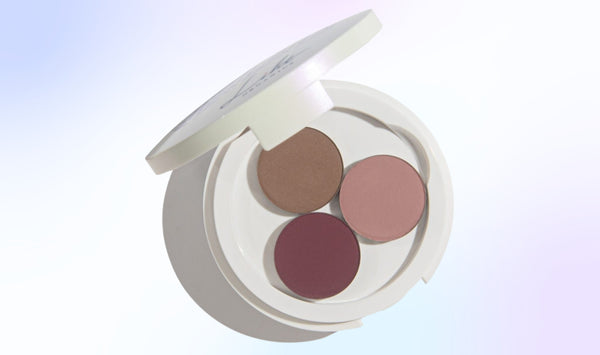
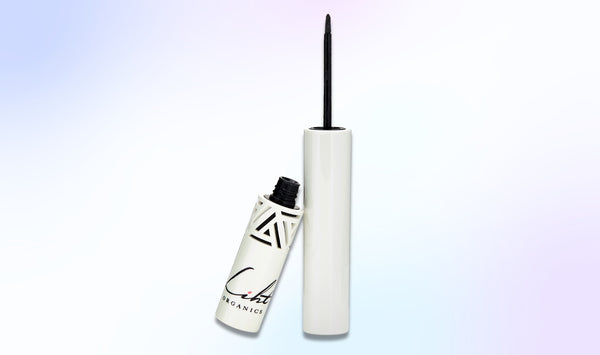
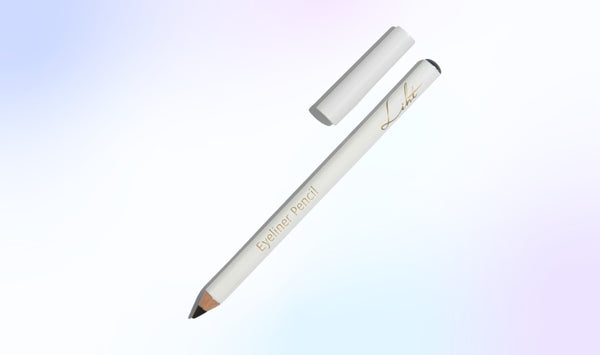


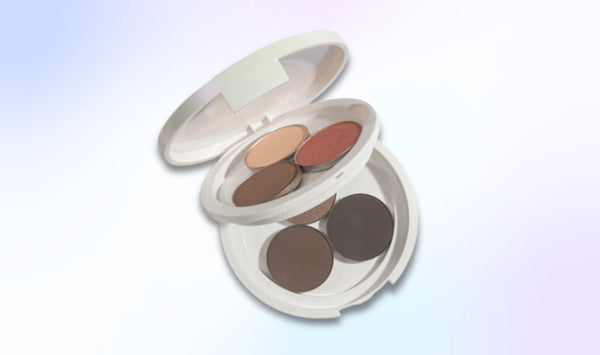
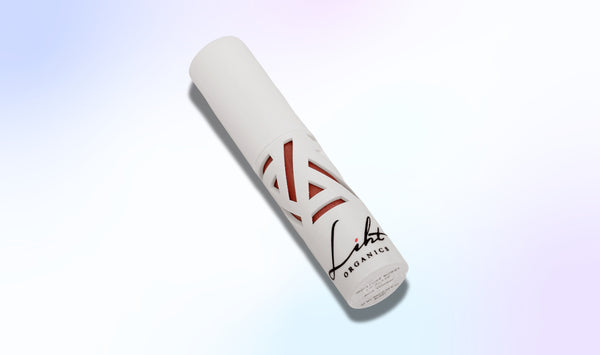
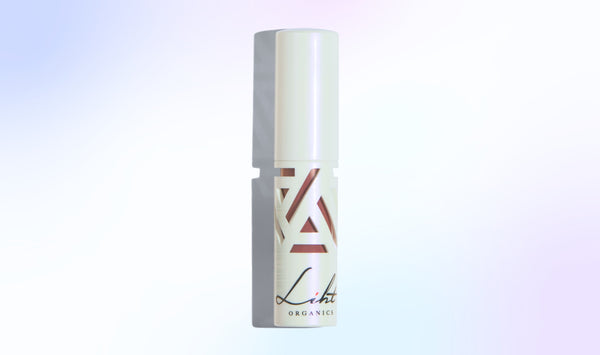
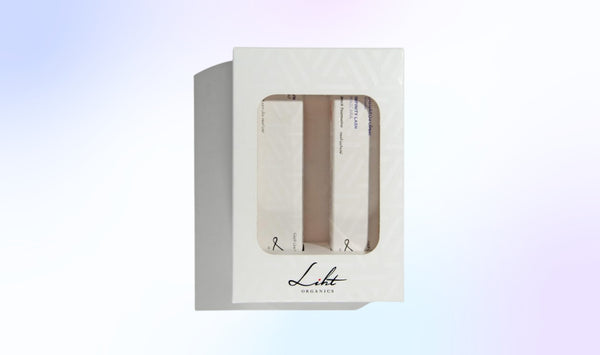
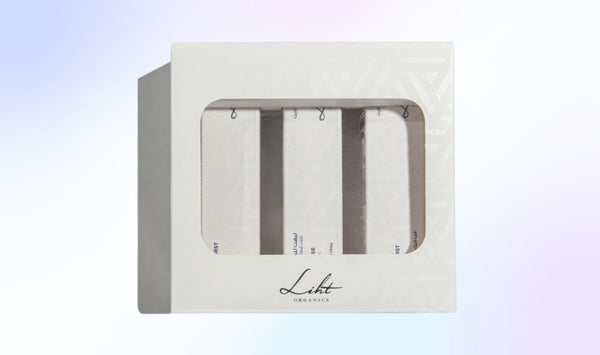


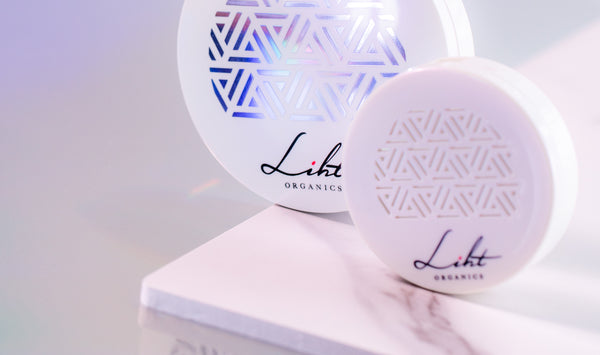
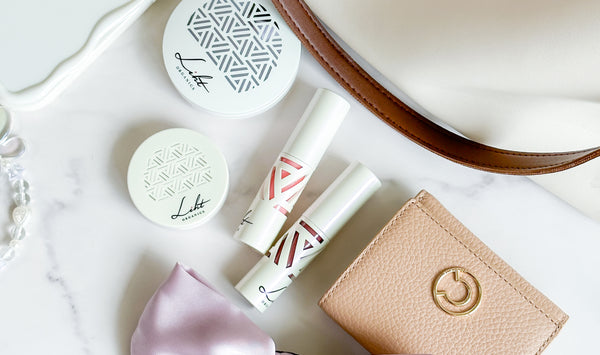
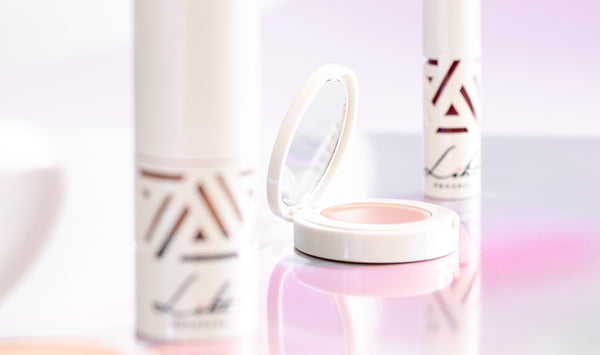




![[FEATURE] Liht Organics to debut at TFWA Asia Pacific show](http://lihtorganics.com/cdn/shop/articles/1_1.png?v=1759328400&width=170)
![[FEATURE] The Singapore-based organic makeup brand is a first-time exhibitor at this year’s TFWA Asia Pacific Exhibition in Singapore in May 2025](http://lihtorganics.com/cdn/shop/articles/2_1.png?v=1759328386&width=170)
![[FEATURE] Travel Retail Awards 2025 finalists - Best Make-up Product Color-Intense Liquid Lipstick – Liht Organics](http://lihtorganics.com/cdn/shop/articles/4_e2f54f0f-fcd1-46e7-9990-fc9d29e35131.png?v=1759328382&width=170)
![[FEATURE] Liht Organics targets expansion in travel retail](http://lihtorganics.com/cdn/shop/articles/3_1.png?v=1759328346&width=170)
































































